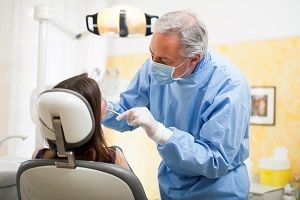Article
UK Mystery: Why More Endocarditis?
Author(s):
The United Kingdom has a medical mystery on its hands: what is causing a recent increase in infective endocarditis? One theory is that the uptick is due to a change in dental care. The UK's National Institute for Health and Care Excellence amended the rules on dental procedures, so patients no longer routinely get prophylactic antibiotics before invasive oral procedures.

The United Kingdom has a medical mystery on its hands: what is causing a recent increase in infective endocarditis?
One theory, presented today at the 2014 American Heart Association (AHA) Scientific Sessions, is that the uptick is due to a change in dental care. The UK’s National Institute for Health and Care Excellence (NICE) amended the rules on dental procedures. Patients no longer routinely get prophylactic antibiotics before invasive oral procedures.
Presenting statistics on the trend today, Martin Thornhill, MNND, BDS, MSc, PhD, of the University of Sheffield School of Clinical Dentistry, said the increase began shortly after the new NICE guidelines were introduced in March 2008.
By March 2013, that translated into an “extra” 35 cases per month over projections.
During the same time period, the prescribing of antiobiotics for dental patients getting invasive procedures fell by 89%. The patients got amoxicillin unless they had an allergy to the drug, in which case they got clindamycin.
“There were about 10,900 prescriptions a month being written,” Thornhill said. That number then dropped to 1,307.
A report on the study is due to be published today in The Lancet. As a result of the study, he said, “NICE has announced it will reevaluate its policy guidelines for prophylactic antibiotic prescribing.
Still, Thornhill conceded that the two trends may be unrelated. “We can’t draw the conclusion that this is cause-and-effect,” he said, discussing the findings today.
The reason the guidelines changed was that no studies were ever done to prove if giving dental patients the drugs did in fact prevent infective endocarditis. In 2007 the AHA changed its guidelines to limit prescriptions to dental patients who were at high risk of getting such infections.
Discussing the study, Druv Adams, MD, a cardiovascular surgeon at Mount Sinai Hospital in New York, NY said he some skepticism.
For one thing, he said, the dental route accounts for only an estimated 10% to 20% of endocarditis, so the increase could be due to another cause. Also, Adams said, during the study period all hospital admissions in the UK went up, which could create “noise in the data.” Until further studies are done, Adams said, “This should not prompt changes in prescribing practice.”





